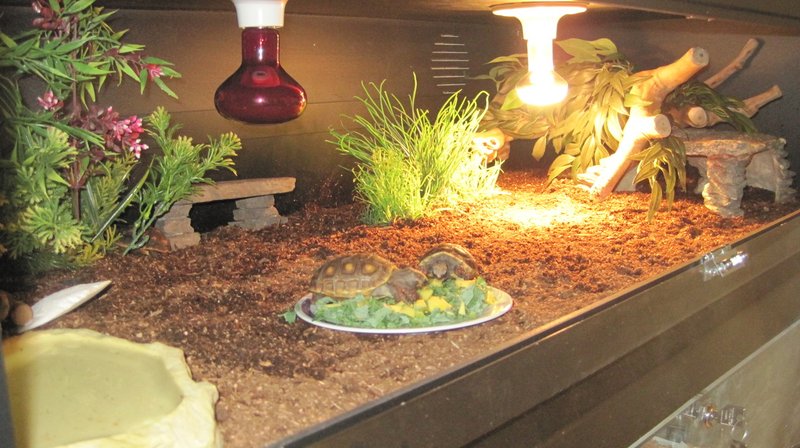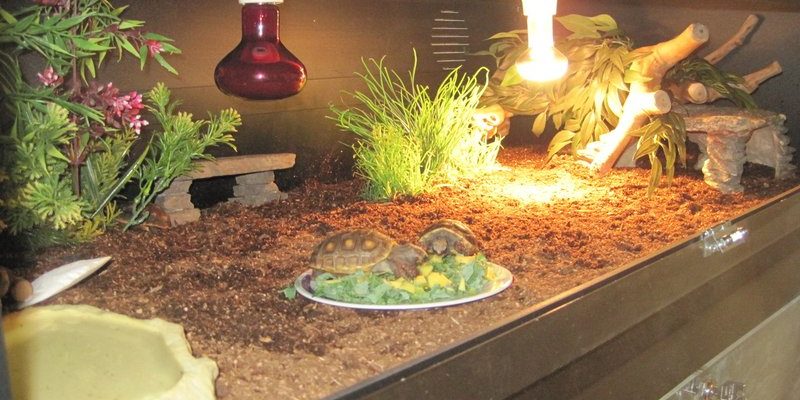
Red-footed tortoises are known for their vibrant shells and friendly dispositions. They hail from the lush forests of South America and love humidity and warmth. This means their enclosure needs to replicate their natural habitat as much as possible. You might be wondering, “Where do I even start?” Don’t worry; I’m here to guide you through the ins and outs of housing your red-footed tortoise so it can feel right at home.
Choosing the Right Enclosure Size
First off, let’s talk about space. The size of your red-footed tortoise’s enclosure is essential. Imagine this tortoise as a little explorer—just like kids, they need room to roam around and discover. As a rule of thumb, a juvenile tortoise can start in a 4×2 foot space, but as it grows, you’ll need to upgrade to at least an 8×4 or larger enclosure.
Why is this important? Tortoises are not couch potatoes! They love to wander, burrow, and stretch out. A cramped space can lead to stress and health problems. It’s like trying to live in a tiny studio apartment—you’d want more room, right?
When planning your enclosure, think about its shape too. A rectangular setup allows the tortoise to explore more effectively than a round one. If you’re building a custom outdoor enclosure, ensure it’s at least 2-3 feet high to prevent escape.
Indoor or Outdoor? Making the Right Choice
You might be wondering whether to keep your red-footed tortoise indoors or outdoors. Honestly, both options have their perks and challenges.
If you choose an indoor setup, you’ll have better control over temperature and humidity. Use a large terrarium or an aquarium that allows for proper ventilation. Make sure it’s well-lit with UVB lighting to replicate sunlight. Plants and hiding spots are a must; they provide enrichment and a sense of security.
On the other hand, an outdoor enclosure can be a fantastic option if you live in a warm climate. However, you need to ensure it’s secure from predators and has shade for hot days. A carefully designed outdoor space can mimic their natural habitat, giving them a sense of freedom.
Both choices are valid depending on your circumstances, but remember—tortoises do enjoy a little sunshine!
Essential Elements of the Enclosure
Now, let’s get into the nitty-gritty of what your tortoise’s home should include. Think of it like setting up a mini ecosystem. Here are the key elements to consider:
- Substrate: Use eco-friendly options like coconut coir or organic topsoil. Avoid cedar or pine shavings; they can be harmful.
- Heating and Lighting: Provide a basking spot with a heat lamp. Temperatures should range from 75°F to 85°F in the cooler areas and up to 90°F in basking areas.
- Humidity: Red-footed tortoises thrive in higher humidity (around 60-80%). Misting the enclosure regularly can help maintain this level.
- Decor: Include hiding spots using rocks, logs, or commercial hides. Plants like hibiscus or dandelions can serve as both decoration and food!
Think of these elements as the ingredients for a well-balanced meal. Each plays a part in ensuring your tortoise is healthy and happy.
Feeding and Watering Stations
Feeding your red-footed tortoise is an essential part of its care routine. In its enclosure, you’ll want to establish distinct feeding and watering stations. Offer a variety of leafy greens, fruits, and pellets to ensure a balanced diet. Just like us, tortoises enjoy variety; their meals shouldn’t be boring!
Place the food in a shallow dish to make it easily accessible. Don’t forget to change the food daily to keep it fresh. Water is equally important. A shallow dish should be available at all times for drinking and soaking. This helps with hydration and digestion.
Here’s a tip: You might notice your tortoise enjoys soaking in its water dish. This is normal! It helps them stay hydrated and can also aid in shedding their scutes, the hard shells.
Temperature and Humidity: Keeping It Just Right
Temperature and humidity control might feel a little overwhelming, but it’s crucial for your tortoise’s well-being. Too hot or too cold can turn their cozy home into a dangerous environment.
Create a temperature gradient in the enclosure. That means one area should be warmer for basking, while the other should be cooler for your tortoise to retreat to when it needs to cool down. A good thermometer can help you monitor its habitat easily.
For humidity, you can achieve the desired levels by misting or using a humidifier. Keep in mind that excessive humidity can lead to respiratory issues, while too little can cause shell problems. It’s a delicate balance, but your tortoise will thank you for your efforts!
Common Problems and Troubleshooting
Even with the best setup, you might encounter some challenges. It’s important to be prepared. For instance, if your tortoise isn’t eating, it might be a sign of stress or an improper environment. Check the temperature and humidity levels first.
Another common issue is shell problems. If you notice any unusual soft spots or deformities, it might be due to a lack of UVB light or improper diet. A vet visit would be a smart step to ensure everything is okay.
You can also keep an eye out for signs of discomfort. If your tortoise is hiding excessively, it could be a sign that something isn’t right. Regular observation and quick adjustments will help you create a happy habitat.
Creating the right enclosure for your red-footed tortoise is more than just a task; it’s about crafting a space filled with love, care, and environment that mimics their natural habitat. From choosing the right size to the essential elements of their home, every detail counts.
It might seem daunting at first, but as you go along, you’ll become more comfortable and confident. Remember, the goal is to provide a safe, cozy kingdom where your tortoise can thrive and explore. With the right care, you’ll have a loyal companion by your side for many years to come. So, roll up your sleeves and start building that perfect enclosure today!

